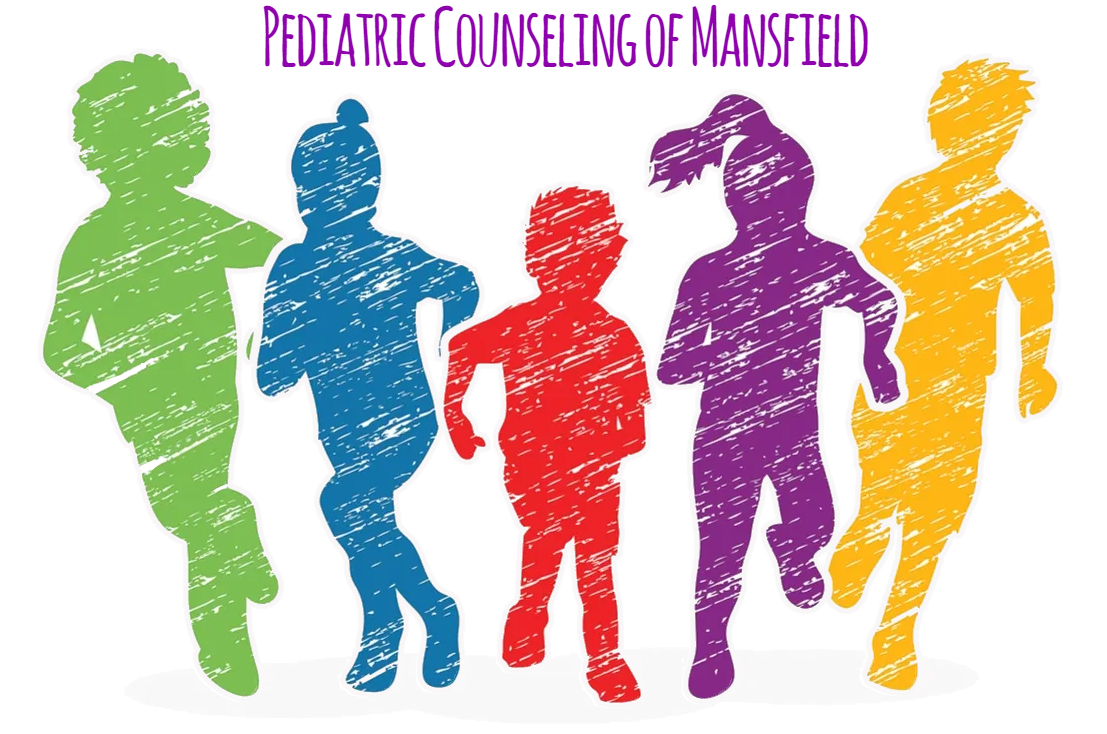Blog

As parents, caregivers, or educators, one of the most valuable gifts we can give children is the ability to cope with life’s ups and downs. Coping skills are the tools we use to handle stress, frustration, disappointment, and even excitement or change. Just like reading or riding a bike, these skills can—and should—be taught and practiced. When children learn healthy ways to cope, they’re better equipped to manage big feelings and bounce back from challenges with confidence and resilience. What Are Coping Skills? Coping skills are strategies people use to deal with stress or difficult emotions. For kids, these might include calming down when angry, asking for help when overwhelmed, or finding ways to express sadness in a safe way. Coping isn’t about ignoring emotions—it’s about recognizing them, understanding them, and responding to them in healthy, productive ways. Why Kids Need Coping Skills Children experience a wide range of emotions daily, sometimes more intensely than adults. From a tough day at school to a disagreement with a friend or a new sibling arriving at home, kids face stressors that can feel overwhelming. Without tools to manage those feelings, children may act out, shut down, or develop anxiety or behavioral challenges. Teaching coping skills early helps children: Build emotional intelligence Develop self-awareness and regulation Improve social interactions and communication Reduce anxiety and stress Feel empowered and confident in hard moments Types of Coping Skills for Kids There are many types of coping strategies. What works for one child may not work for another, so it’s important to offer a variety of tools and help kids explore what feels best to them. 1. Physical Coping Skills These involve movement and help release built-up energy or tension: Going for a walk or run Jumping on a trampoline Squeezing a stress ball Dancing to music Deep breathing exercises 2. Sensory Coping Skills These help regulate the nervous system by stimulating or calming the senses: Using a weighted blanket Playing with kinetic sand or playdough Listening to calming music Taking a warm bath Drinking cold water 3. Cognitive Coping Skills These involve changing thought patterns or focusing attention: Positive self-talk (“I can do hard things”) Visualizing a safe or happy place Naming emotions to understand them Practicing gratitude Using a coping journal 4. Creative Coping Skills These allow emotional expression through creativity: Drawing or painting Writing or storytelling Playing an instrument Building with blocks or Legos Acting out feelings with puppets or toys 5. Social Coping Skills These involve seeking connection and support: Talking to a trusted adult Spending time with a pet Playing with a friend Asking for help Joining a group or activity Teaching Coping Skills: Tips for Adults Model Them : Kids learn best by example. When you use coping strategies yourself, it sends a powerful message. Practice During Calm Moments : Introduce and practice coping skills when your child is calm—not in the heat of a meltdown. Create a Coping Toolbox : Let your child help build a kit with calming tools like sensory toys, coloring supplies, or calming cards. Use Visuals : Charts, posters, or emotion wheels can help children identify their feelings and choose a coping strategy. Praise Efforts : Recognize when your child tries to use a skill, even if it’s not perfect. Encouragement builds confidence. Final Thoughts Learning to cope is a lifelong journey, and it starts in childhood. The more we equip kids with emotional tools, the more resilient and emotionally healthy they become. Every meltdown, every worry, and every challenge is an opportunity to guide them toward self-understanding and growth. By teaching and practicing coping skills, we’re not just helping kids handle today’s problems—we’re preparing them for tomorrow’s challenges with strength and heart.

Imagine being in a classroom, hearing the teacher’s voice, but the words don’t quite land the right way. It’s like tuning into a radio station that keeps cutting in and out. That’s what life can feel like for a child with Auditory Processing Disorder (APD). APD isn’t about hearing loss. Kids with APD usually have normal hearing—they can detect sounds just fine. But the brain has trouble interpreting those sounds in a meaningful way. It’s a hidden challenge, often mistaken for inattention, learning delays, or behavioral issues. Let’s take a closer look at what APD is, how it can show up in children, and how you can support a child who’s navigating it. What Is Auditory Processing Disorder? Auditory Processing Disorder is a condition where the brain has difficulty processing the sounds it hears. It affects how a child understands and makes sense of auditory information, especially in environments with background noise or fast-paced conversations. APD is sometimes called Central Auditory Processing Disorder (CAPD) . It’s not a problem with hearing, but with how the brain processes what’s heard. How Might APD Affect Kids? Children with APD may seem like they aren’t listening—but often, they’re trying really hard to make sense of what’s being said. The signs can vary from child to child, but common challenges include: 🔹 Difficulty Following Directions Kids with APD may have trouble processing multi-step instructions, especially if given quickly or in a noisy environment. 🔹 Struggling in Noisy Settings Background noise makes it even harder for them to focus on speech, so places like classrooms, lunchrooms, or playgrounds can be overwhelming. 🔹 Mishearing or Asking “Huh?” Often They may frequently mishear words or need things repeated. This isn’t defiance—it’s a genuine processing delay. 🔹 Trouble with Reading and Spelling Since auditory skills play a big role in language development, kids with APD may struggle with phonics, reading fluency, or spelling. 🔹 Easily Distracted or “Zoning Out” Because their brain is working overtime to process sounds, they can tire more easily or appear inattentive. Diagnosis and Support APD is typically diagnosed by an audiologist through a series of specialized tests. If you or a teacher suspect your child might have APD, the first step is often a referral from your pediatrician to an audiologist or speech-language pathologist. Once diagnosed, there are many ways to support a child with APD: ✅ Classroom Accommodations Preferential seating near the teacher Visual aids to support verbal instruction FM systems (microphones that amplify the teacher’s voice directly to the child) ✅ Speech and Language Therapy Therapists can help strengthen auditory processing skills and teach strategies to help kids compensate. ✅ At-Home Strategies Break instructions into smaller steps Use visual cues or checklists Limit background noise during homework or conversation Be patient and offer repetition without frustration The Emotional Impact Kids with APD are often trying really hard—but they might still get labeled as “distracted,” “lazy,” or “defiant.” That misunderstanding can take a toll on their confidence. It’s important to reassure your child that they’re smart, capable, and not alone. Celebrate their strengths, and advocate for their needs—at school, at home, and everywhere in between. Final Thoughts Auditory Processing Disorder may be invisible, but its impact is very real. The good news? With the right support, kids with APD can thrive academically, socially, and emotionally. If you suspect your child might be struggling to process what they hear, trust your gut and seek help. Understanding the “why” behind their challenges can make all the difference—not just for how they learn, but for how they feel about themselves. Because every child deserves to feel heard—even when their brain processes sound a little differently.

As a parent, choosing what your child watches can feel like navigating a maze of flashing lights and loud trailers. One moment, a movie seems playful and innocent. The next, you're scrambling for the remote as something unexpectedly mature flashes across the screen. That’s where movie ratings come in. Designed as a guideline, these age-based classifications can be a helpful tool in your parenting toolkit—but they’re not the whole story. Let’s dive into what these ratings really mean, how they can be applied in real life, and why you, not the rating system, are the best judge of what’s right for your child. What Do Movie Ratings Mean? Most countries have some sort of film classification board. In the U.S., it’s the MPAA (Motion Picture Association of America). Here’s a quick breakdown: G (General Audiences) : Suitable for all ages. No content that would offend parents. PG (Parental Guidance Suggested) : Some material may not be suitable for young children. PG-13 : Parents strongly cautioned. May include violence, language, or suggestive material. R (Restricted) : Under 17 requires accompanying parent or adult guardian. Contains adult material. NC-17 : Strictly for adults. No one under 17 admitted. These ratings can offer a baseline, but they’re far from perfect. A PG movie from 1995 might feel more risqué than a modern PG-13 one, and what one family finds acceptable, another might not. Using Ratings as a Starting Point, Not the Rulebook Ratings are a helpful filter, but they don’t tell the whole story. A few tips for using them wisely: 1. Context Is Everything A PG-13 film might have violence—but is it cartoonish or realistic? A PG film might have “mild language”—but what words are we talking about? Read reviews or watch the movie yourself first. Resources like Common Sense Media give parent-focused breakdowns. 2. Every Child Is Different Some 8-year-olds are more sensitive to scary scenes than others. Some teens are unfazed by fantasy violence but uncomfortable with romantic content. Tune into your child’s emotional maturity, personality, and curiosity. 3. Use It As a Conversation Starter If your child wants to watch something above their age bracket, talk about why they’re interested. Watch it together if you choose to allow it—and be ready to hit pause and discuss. These can be golden moments for teaching critical thinking and empathy. 4. Build a Family Rating System Consider making your own “family-approved” list. If your values emphasize kindness, respect, and resilience, prioritize media that reflects those themes—even if it doesn’t carry a G rating. Let your kids be part of the conversation. Balancing Protection and Preparation Our job as parents isn’t just to shield our children from the world—it’s also to help them grow into thoughtful, confident individuals. Media plays a powerful role in that development. Movies can entertain, yes—but they can also teach empathy, expand imagination, and open the door to deeper discussions. By being intentional with what we allow into our homes and minds, we’re teaching our kids to be intentional too. Final Thoughts Movie ratings are a great tool—but they're just that: a tool. Not a rulebook, not a substitute for parental judgment, and definitely not one-size-fits-all. The best guide? Your relationship with your child and the conversations you build together. So the next time you're browsing for family movie night, go beyond the rating. Think about the message, the impact, and the opportunity for connection. Because that’s where the real magic is.

The Benefits of Counseling for Kids: Helping Young Minds Thrive Childhood is a time of rapid growth—physically, emotionally, and mentally. But just like adults, kids can face challenges that feel overwhelming. Whether it’s anxiety, big life changes, struggles at school, or difficulty managing emotions, counseling can be a powerful tool to help children navigate their world with confidence and support. 🌟 Why Might a Child Need Counseling? Children may not always have the words to express what they’re going through, but their behavior often tells the story. Counseling can help with: Anxiety, worry, or fears Emotional outbursts or anger Grief or loss Divorce or family transitions School or social struggles Low self-esteem or confidence Trauma or difficult life events 💬 How Does Counseling Help? Counseling gives kids a safe, nonjudgmental space to explore their thoughts and feelings. Through play therapy, art, talking, or mindfulness, they learn how to: ✅ Understand and express emotions ✅ Build coping and problem-solving skills ✅ Improve communication and relationships ✅ Strengthen self-esteem and resilience ✅ Feel heard, supported, and empowered 👨👩👧 Support for the Whole Family Counseling isn’t just for the child—it can also support the entire family. Parents can gain insight into their child’s needs, learn new strategies for connection and discipline, and feel less alone in the process. 🛑 It’s Not a Sign of Weakness—It’s a Step Toward Strength Choosing counseling isn’t a sign that something is “wrong.” It’s a sign of love, awareness, and a commitment to helping your child thrive emotionally and mentally. Everyone—kids included—deserves a space to be seen, heard, and understood. If you're considering counseling for your child, you're not alone—and you're making a beautiful, powerful choice. 💛 #ChildTherapy #CounselingForKids #MentalHealthMatters #ParentingSupport #KidsDeserveSupport

In recent years, therapy has evolved significantly, expanding beyond traditional face-to-face sessions to include telehealth services. With this shift, individuals seeking mental health support have more options than ever, making it easier to find a method that fits their needs and lifestyles. But how do you decide which is best for you? Let’s explore the benefits and challenges of both in-person counseling and telehealth to help you make an informed decision. The Rise of Telehealth: Convenience Meets Accessibility 1. Convenience and Flexibility Telehealth, which includes phone or video counseling sessions, offers unparalleled flexibility. There’s no need to commute to a therapist’s office, making it a convenient option for those with busy schedules or mobility limitations. Whether you're at home, in the office, or traveling, you can connect with your therapist from almost anywhere, as long as you have an internet connection. For parents, caregivers, or professionals who juggle multiple responsibilities, telehealth can be a lifesaver. 2. Accessibility for Remote Areas In-person counseling may not be easily accessible for those living in rural or remote areas. Telehealth breaks down geographic barriers, allowing people to connect with qualified mental health professionals without the need to travel long distances. This is especially beneficial for individuals in underserved communities where there may be fewer mental health professionals. 3. Comfort and Privacy For some, the idea of being in a therapy office may feel intimidating or uncomfortable. Telehealth allows individuals to receive support in the privacy of their own homes, fostering a sense of safety and control. It can also feel less formal, helping clients open up more easily during sessions. However, while telehealth offers many benefits, it isn’t without its challenges. The Benefits of In-Person Counseling: Face-to-Face Connection 1. Nonverbal Cues and Body Language One of the key advantages of in-person counseling is the ability for both the therapist and client to pick up on nonverbal cues, such as body language, facial expressions, and eye contact. These subtle elements play an important role in communication and can deepen the therapeutic relationship. In a video session, these cues can be harder to interpret, especially if the connection is poor or if the therapist only sees the client from the shoulders up. 2. Focus and Presence In-person therapy often fosters a more focused and engaged environment. Without the distractions of technology, clients and therapists can feel more present and connected. For some individuals, the act of physically going to a therapist's office sets a distinct boundary between their everyday life and the therapeutic space, which can promote deeper reflection and work. 3. More Tailored Therapeutic Approaches Some therapeutic techniques, such as play therapy, art therapy, or certain forms of body-based trauma therapies, are difficult to replicate over telehealth. In-person counseling allows for a wider range of interventions, including those that involve movement, touch (in appropriate forms of therapy), and creative tools. For clients who benefit from these specific approaches, face-to-face counseling may be more effective. Challenges of Both Modalities 1. Telehealth Challenges Telehealth relies heavily on technology, which means that a poor internet connection, technical glitches, or unfamiliarity with video platforms can disrupt sessions. For some, the absence of physical presence makes it harder to establish a strong emotional connection with their therapist. Additionally, for individuals in living situations where privacy is a concern, finding a quiet, uninterrupted space for a telehealth session may be challenging. 2. In-Person Challenges On the other hand, in-person therapy comes with its own set of hurdles. The need to travel to a therapist’s office can be a barrier for people with busy schedules, mobility issues, or those who live in areas where mental health services are sparse. Some individuals may also feel anxious or self-conscious about being seen going to therapy, which could deter them from seeking help. What’s the Best Option for You? The decision between in-person counseling and telehealth ultimately depends on your personal preferences, lifestyle, and therapeutic needs. Telehealth may be right for you if: You have a busy schedule and need flexibility. You live in a remote or underserved area. You feel more comfortable engaging in therapy from your home. You need quick access to support, without the logistics of commuting. In-person therapy may be better if: You value face-to-face interaction and nonverbal communication. You prefer a focused, technology-free environment. You are working with a therapist who uses techniques that require physical presence, such as art or somatic therapies. Conclusion: There’s No One-Size-Fits-All Both in-person counseling and telehealth have their unique strengths, and what works best for you will depend on your individual situation. For some, a hybrid approach that combines the two might even be the perfect balance. The most important thing is to find a therapeutic environment where you feel supported, comfortable, and empowered to work on your mental health. Ultimately, the right choice is the one that aligns with your needs, goals, and preferences. Whether you choose to meet with your therapist in person or online, taking the step to prioritize your mental well-being is what truly matters.

Aggressive play often conjures images of roughhousing, loud voices, and perhaps a few scrapes and bruises. While it might seem counterintuitive to encourage such behavior, aggressive play is a natural and crucial part of childhood development. It helps children learn valuable skills and navigate social boundaries. In this blog, we will explore why aggressive play is important for children and how it contributes to their overall growth. What is Aggressive Play? Aggressive play includes activities where children engage in physical and sometimes competitive interactions. This can range from wrestling and chasing to mock fighting and playful teasing. It is important to distinguish aggressive play from actual aggression, which involves intent to harm. In aggressive play, the actions are generally mutual, consensual, and conducted in a safe environment. The Benefits of Aggressive Play 1. Physical Development Aggressive play is an excellent way for children to develop their physical abilities. Running, jumping, wrestling, and other vigorous activities help improve motor skills, strength, coordination, and overall physical fitness. These activities also encourage cardiovascular health and help in maintaining a healthy weight. 2. Emotional Regulation Through aggressive play, children learn to regulate their emotions. They experience a range of feelings, such as excitement, frustration, and even anger, in a controlled environment. This helps them understand and manage their emotions better, leading to improved emotional intelligence and resilience. 3. Social Skills Aggressive play often involves negotiation, rule-setting, and conflict resolution. Children learn to communicate their boundaries, listen to others, and take turns. These interactions foster social skills such as empathy, cooperation, and assertiveness. They also learn to distinguish between playful aggression and real hostility. 4. Risk-Taking and Resilience Engaging in aggressive play allows children to take risks in a relatively safe environment. They learn to assess their limits and understand the consequences of their actions. This experience builds resilience and confidence, preparing them to face challenges in other aspects of life. 5. Creativity and Imagination Many forms of aggressive play, such as pretend fighting or role-playing games, stimulate creativity and imagination. Children create scenarios, develop characters, and navigate complex narratives, enhancing their cognitive flexibility and problem-solving skills. Guidelines for Safe and Positive Aggressive Play While aggressive play has numerous benefits, it is essential to ensure it is conducted safely and positively. Here are some guidelines to follow: Supervision : Always supervise aggressive play to ensure it remains safe and consensual. Intervene if play becomes too rough or if any child appears uncomfortable. Set Boundaries : Establish clear rules and boundaries. Make sure children understand what is acceptable and what is not. Teach Respect : Emphasize the importance of respecting others' limits and feelings. Encourage children to stop immediately if someone asks them to. Promote Communication : Foster open communication among children. Encourage them to express their feelings and resolve conflicts verbally. Model Behavior: Demonstrate positive behaviors and attitudes during play. Children often imitate adults, so be a good role model. Aggressive play is a vital component of childhood development. It offers a plethora of benefits, from physical fitness and emotional regulation to social skills and creativity. By allowing children to engage in aggressive play in a safe and structured manner, we can help them grow into well-rounded, confident, and resilient individuals. So, the next time you see children roughhousing, remember that they are not just playing—they are learning and growing.






